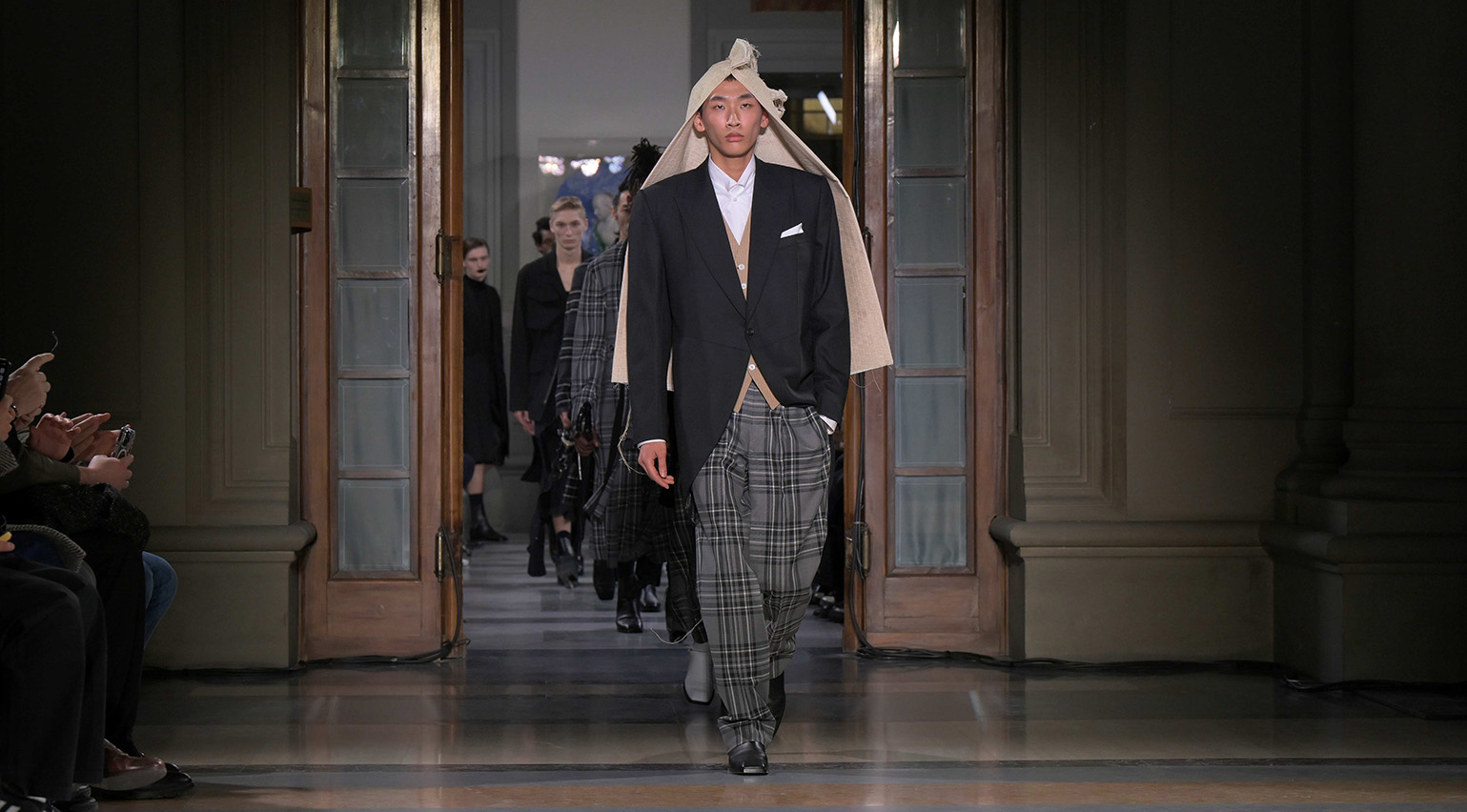
‘One thing, infinite possibilities,’ read the show notes at the Setchu show on Thursday evening (16 January 2025) at Pitti Uomo 107 in Florence, a sentiment that not only defines the design ethos of the burgeoning Milan-based brand, but the core motivation of its rising-star founder and creative director, Satoshi Kuwata.
In the short time since he launched his brand in 2020, Kuwata has established Setchu as one of the most intriguing young labels for its fusion of Kuwata’s native Japanese culture and the traditional Western design codes that he has mastered over the course of a two-decade career working in the fashion industry for labels like Givenchy and Gareth Pugh. In 2023, Setchu would win the prestigious LVMH Prize for Young Designers.
Setchu’s debut runway show at Pitti Uomo
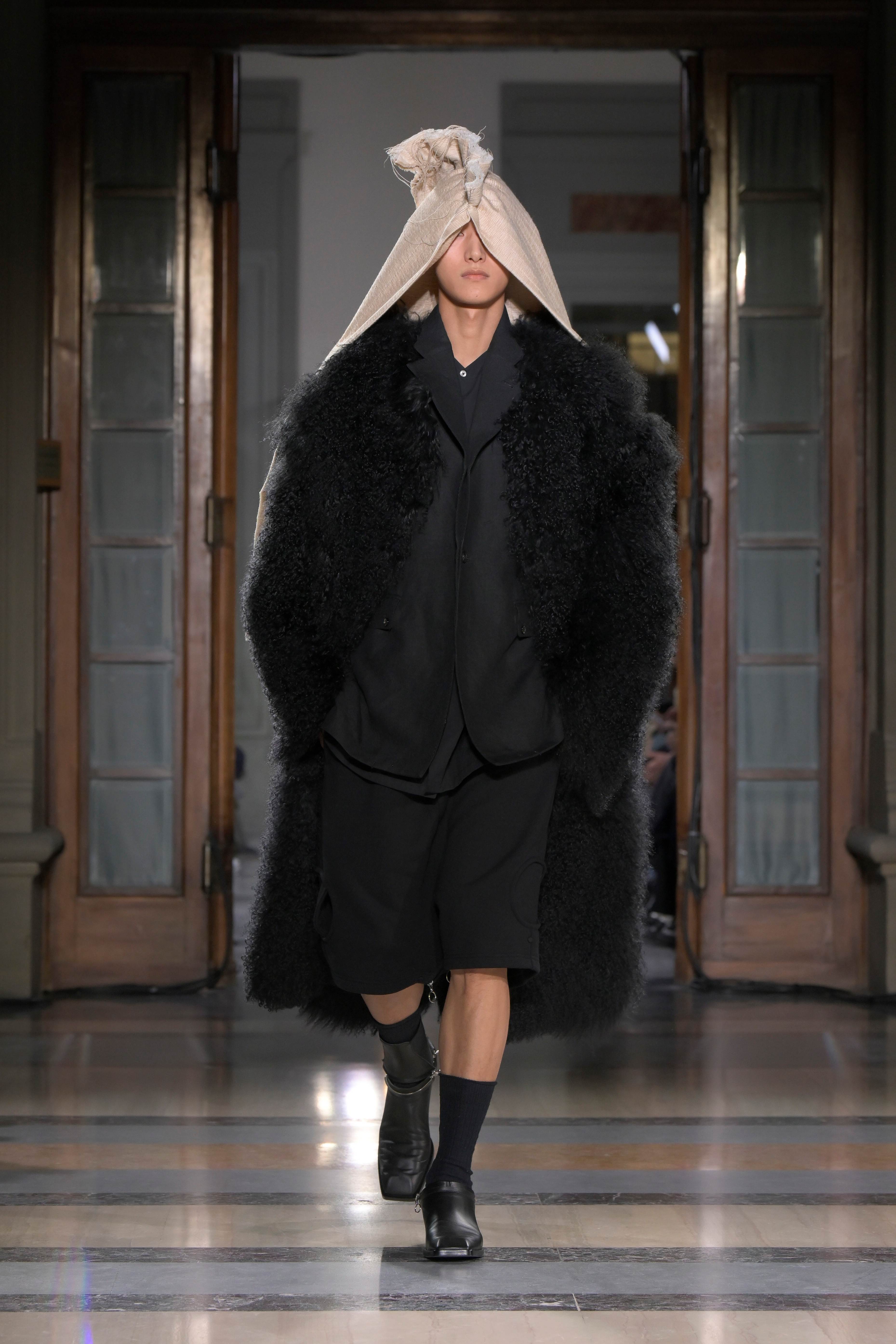
‘Setchu is the idea of merging things together, completely different things and contrasting objects,’ the designer told Wallpaper* ahead of the debut fashion show for his brand that takes its name from the Japanese term ‘wayo setchu’, which refers to the compromise between Japan and the West.
His A/W 2025 collection began with a piece of origami paper, which became the inspiration point behind the sculptural, three-dimensional tailoring, with elements of deconstruction. Safari jackets and peacoats featured origami folds and marble-effect denim jackets had a built-in corset structure. Elsewhere, ribbed-knit cardigans and tabards were worn with precision-cut ‘hakama’ trousers, ‘haori’ jackets were presented in plaid, and ‘The Tale of Genji’ was depicted in gold-accented jacquard.
Sitting the audience in close proximity to the models as they walked around the storied halls of Florence’s Biblioteca Nazionale to the sounds of Purient’s ‘Sagittarius’, the exquisite detailing came into the spotlight as Kuwata revealed his special brand of sublime simplicity. ‘Even when I was young, I really liked the idea of this, less is more, wabi sabi,’ he said prior to the show. ‘I think it's the balance of beauty that Japan has.’
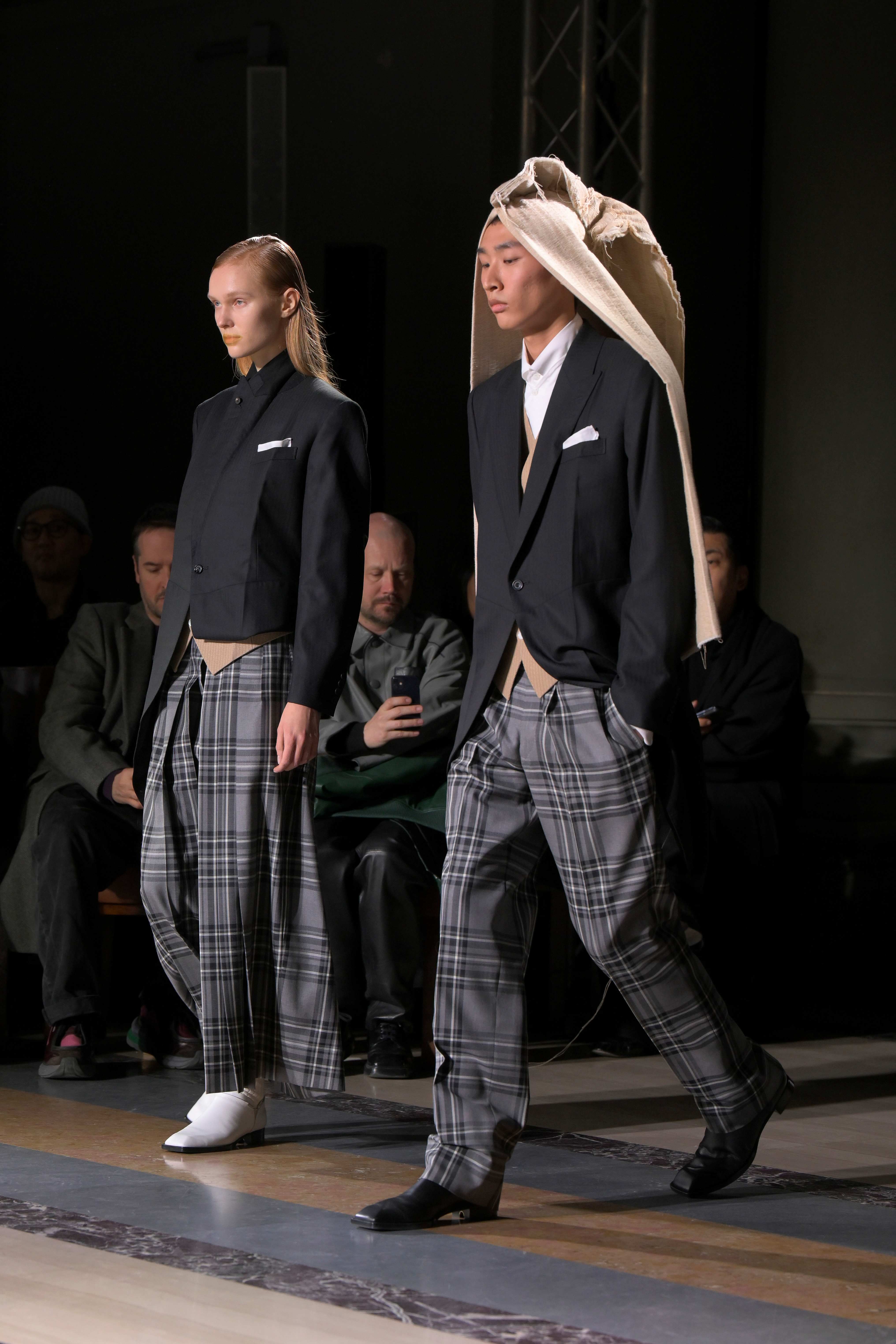
At the age of 41, Kuwata’s realisation of Setchu is the long-planned manifestation of his life’s work and learning. The designer, who was born in Kyoto, was ‘seven or eight years old’, when he realised he wanted to be a fashion designer. ‘My aunt was a fashion designer and so I grew up close to the fashion environment and I had a lot of garments as my toys,’ he explains. ‘Other [kids] were doing PlayStation, Nintendo; I was playing with a jacket and I really liked it, the construction of it. It was very normal for me.’
When he was 21, Kuwata left Japan and moved to London to immerse himself in tailoring. ‘It was either going to be Napoli or London to really learn but, in the end, I went to London because Savile Row is the capital of tailoring,’ he says. The day he arrived he started knocking on doors asking for a job, but not being able to speak English hindered opportunities.
‘It took me one year to get a job, obviously as I couldn't speak English, so in the beginning I worked in a Japanese restaurant washing dishes and after that, I went to work for Pret A Manger and learned my English skills,’ he says. ‘Six months later, I got an intern job at a small tailor called Joe Allen in Islington and that's where I really learned a lot in the making of trousers and jackets, all the construction.’ Then came a call from Huntsman & Sons. ‘They heard about the Japanese guy working so hard in Angel and they approached me.’

It was at Huntsman & Sons where he fell in love with tailoring. ‘There, my boss told me, “Satoshi, Savile Row is not draping. It's sculpting. It just the material happens to be softer. But don’t drape. We are sculpting, and that's really the important thing.” The fabric is really soft, but you need to control it. Controlling can’t just be done by draping. And that's something I really learned.’
With the seeds of starting his own label firmly sewn, Kuwata changed tack, working with haute-meets-ready-to-wear designer Gareth Pugh, followed by senior stints at Yeezy with Kanye West, Givenchy with Ricardo Tisci in Paris, Edun and The North Face in New York, and then to Milan to take up a ‘commercial’ creative director role. Each was a deliberately different fashion business both in category and scale so that he could gather as much experience as possible, building his toolbox to construct his brand.
‘We have this proverb in Japan, if you want to rush, you should go around,’ he says. ‘I knew throughout my career that to have my own label will cost a lot of money. I will not be able to hire CEO or general manager to sort out the problems, I have to sort out the problem. I think running business is all about sorting out the problems. This is why I needed to study by working to be able to face any situation.’
‘I was thinking: I am in love with double-breasted tailored jackets and I'm also from a country which is famous for the kimono. How can I combine them together?’
Satoshi Kuwata
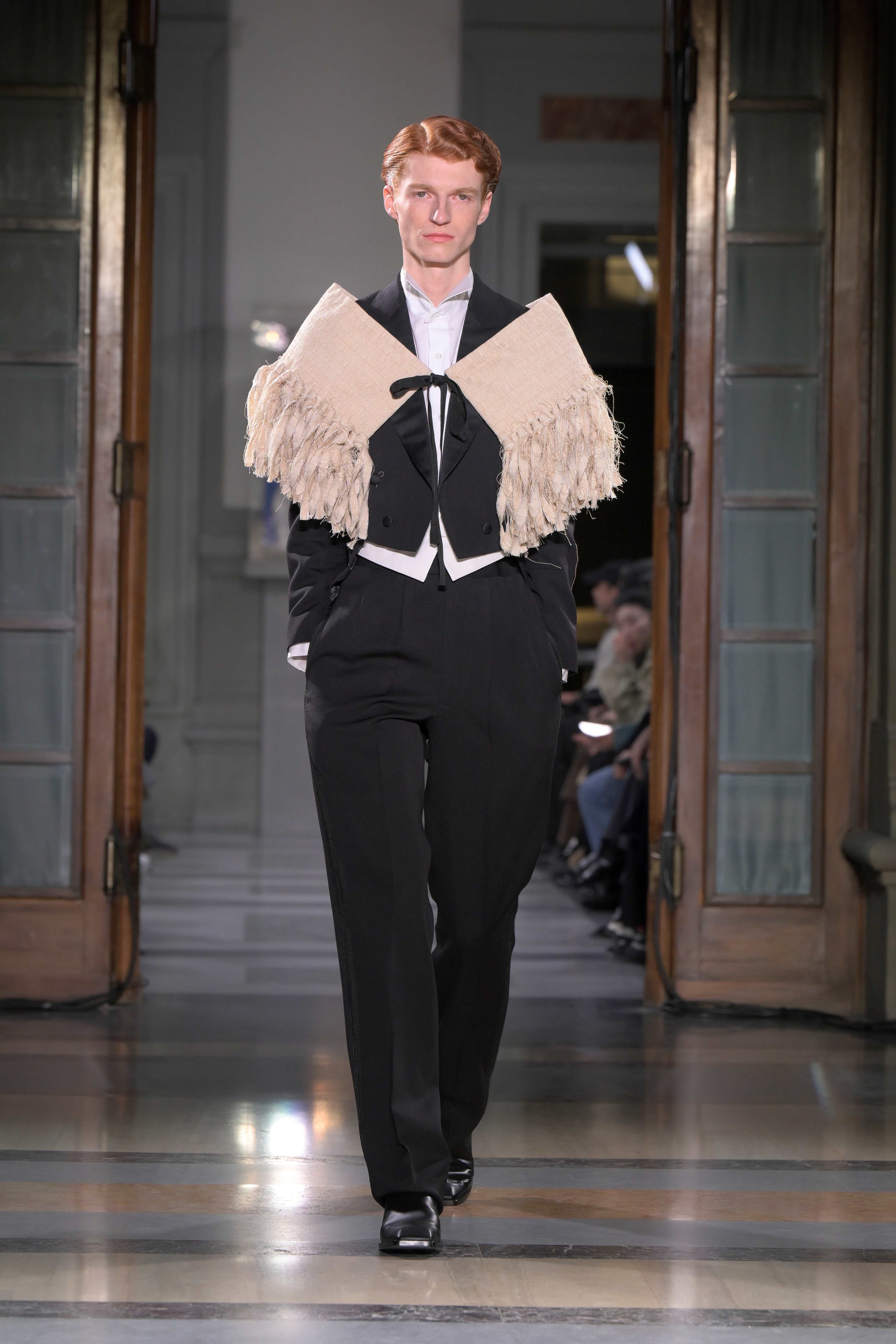
At 37 years old in 2020, Kuwata felt ready to launch his own label mid-pandemic. ‘I was thinking: I am in love with double-breasted tailored jackets and I'm also from a country which is famous for the kimono. How can I combine them together? And then I came up with this simple idea of a jacket, but you can fold it like origami, and this was really the beginning.’
After two decades working his way up to lucrative positions, the experience, he says, was akin to going back to a student’s budget. Then the LVMH Prize came along in 2023, awarding the designer €400,000 to scale his business, a decision that was voted for unanimously by the esteemed panel including Marc Jacobs, Jonathan Anderson, and Delphine Arnault for the first time in its then-ten-year history. The mentorship that came with it was even more valuable.
‘We are really expanding the network sustainably, thanks to LVMH, and Delphine herself really cares about us too. That's something really special,’ says Kuwata. ‘I feel like I've been looked after, as if I'm like, one of the maisons [that are part of LVMH], and this is definitely more than the money they gave.’
‘My dream is not just to build a fashion company. I think I want to build this kind of Setchu-ism’
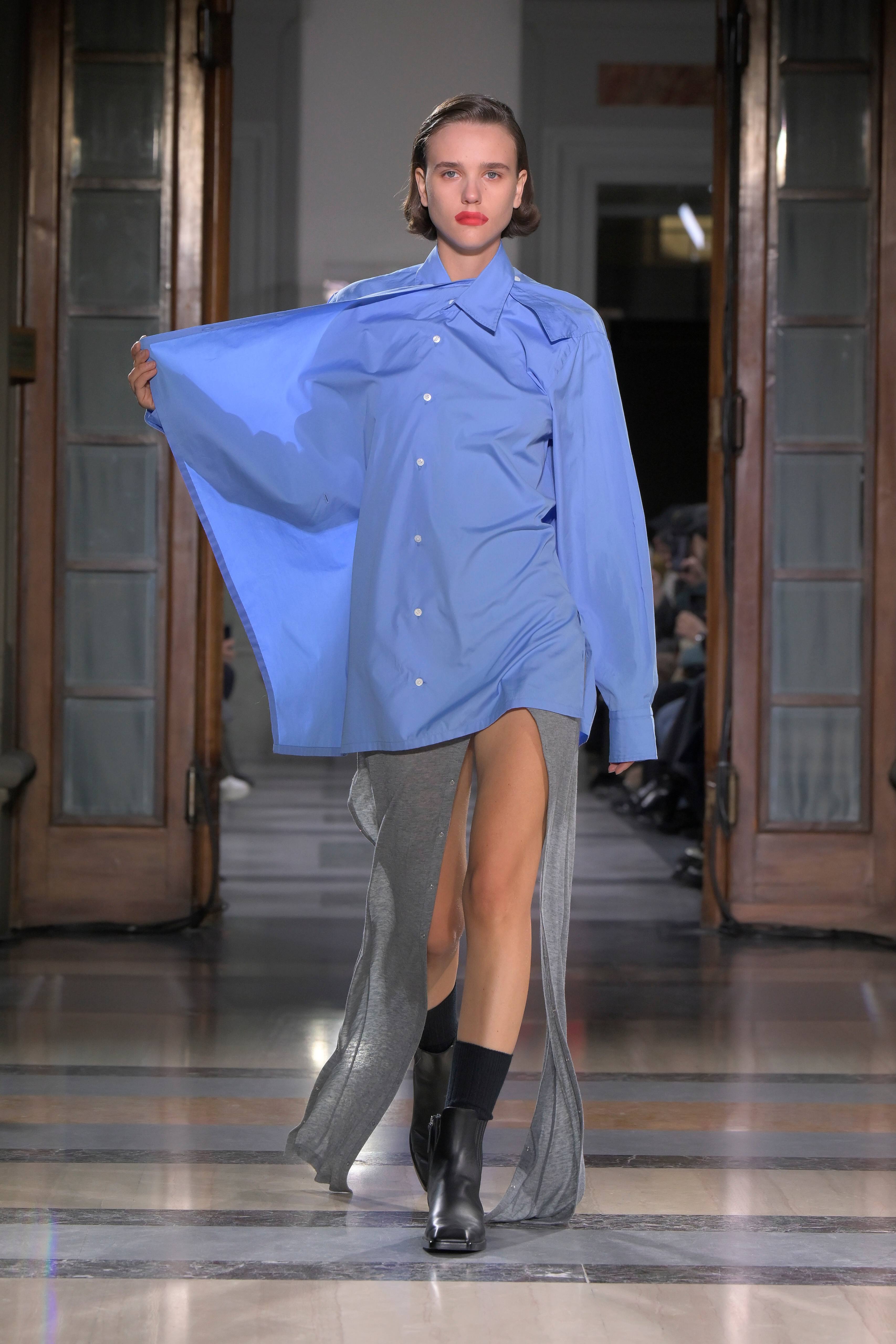
Fast forward a year and a half and Pitti Uomo invited Setchu to be guest designer at this week’s showcase, after seeing an installation Kuwata worked on with Savile Row’s oldest independent tailor, Davies & Sons, at the 2024 Venice Biennale. Speaking before the show, Kuwata was adamant that it will be both his first and last.
‘If all my outside team says Satoshi, after this, let’s do another fashion show, I will reconsider again; it’s not my own decision, as we are working as a team. But if I could decide, I don’t really see the point of doing a fashion show every season because I’m not going to design a garment every season.’
Instead, Kuwata is interested in creating a movement. ‘It’s not just applied to the fashion. This is the thing I get really excited about because I love fashion. But my dream is not just to build a fashion company. I think I want to build this kind of Setchu-ism that something can apply to lifestyle.
‘We set the goal, and now we are just like pulled by the power of this, our creative direction, and that's how I'm trying to create,’ he continues, paving the way for infinite possibilities.
What else to expect from Men’s Fashion Weeks A/W 2025







